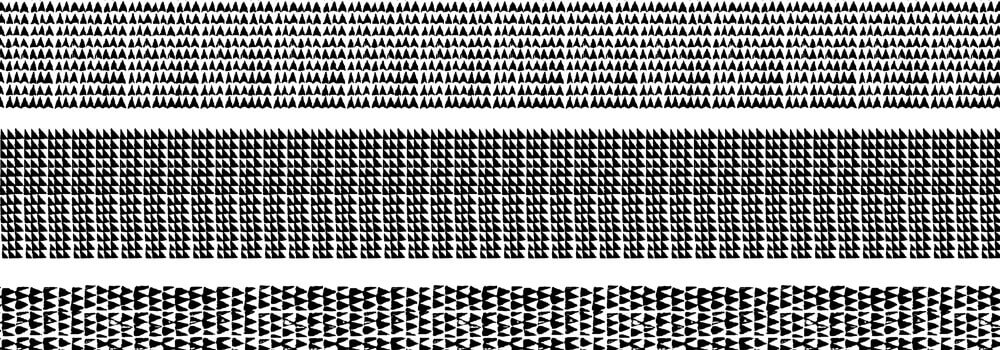NIHO KŪ

Inspired by the harbor flats from Pāhonu to Māhukona on the Kohala coast of Hawai‘i Island, the Niho Kū pattern is comprised of a set of prints based on the jagged lava rock formations that jut from the sea. As a child, Manaola would paddle along this coastline, and the rugged landscape was a familiar site for the emerging artist. The receding tide displays tooth-shaped rocks, eroded through time by the power of the ocean, reminding Manaola of the sharp teeth of the manō (shark).
The first print in the pattern is called Niho ‘Ai Kalakala, and represents the constant sharpening of a shark’s teeth during the course of its long life. The second print, Nihomanō, refers to the shark-infested waters of Pelekane Bay. The final print, Niho Kū, or “standing shark tooth,” is based on a traditional design found in Hawaiian artwork. Though it may appear to be a basic triangular formation, its essence is tied to a deeper significance within the sacred geometry of traditional Hawaiian thought.


